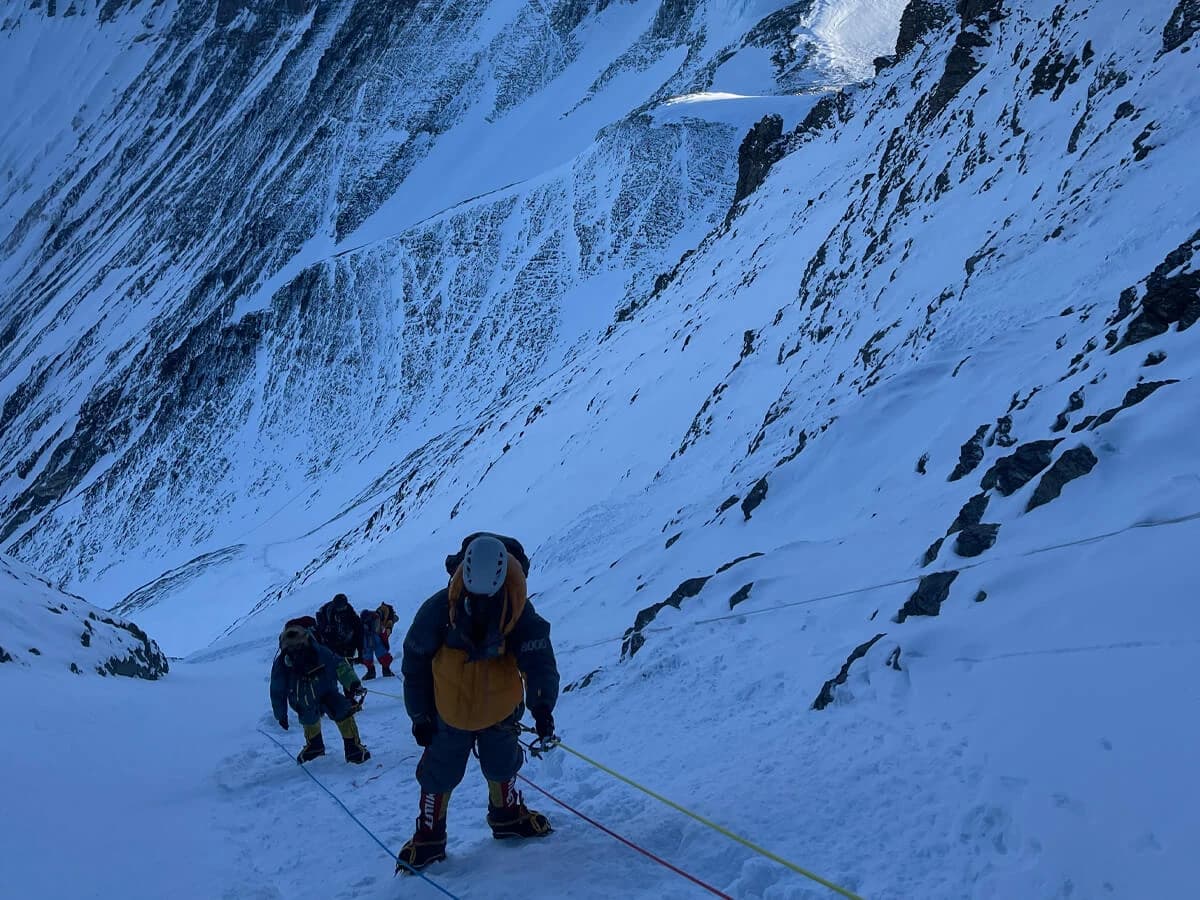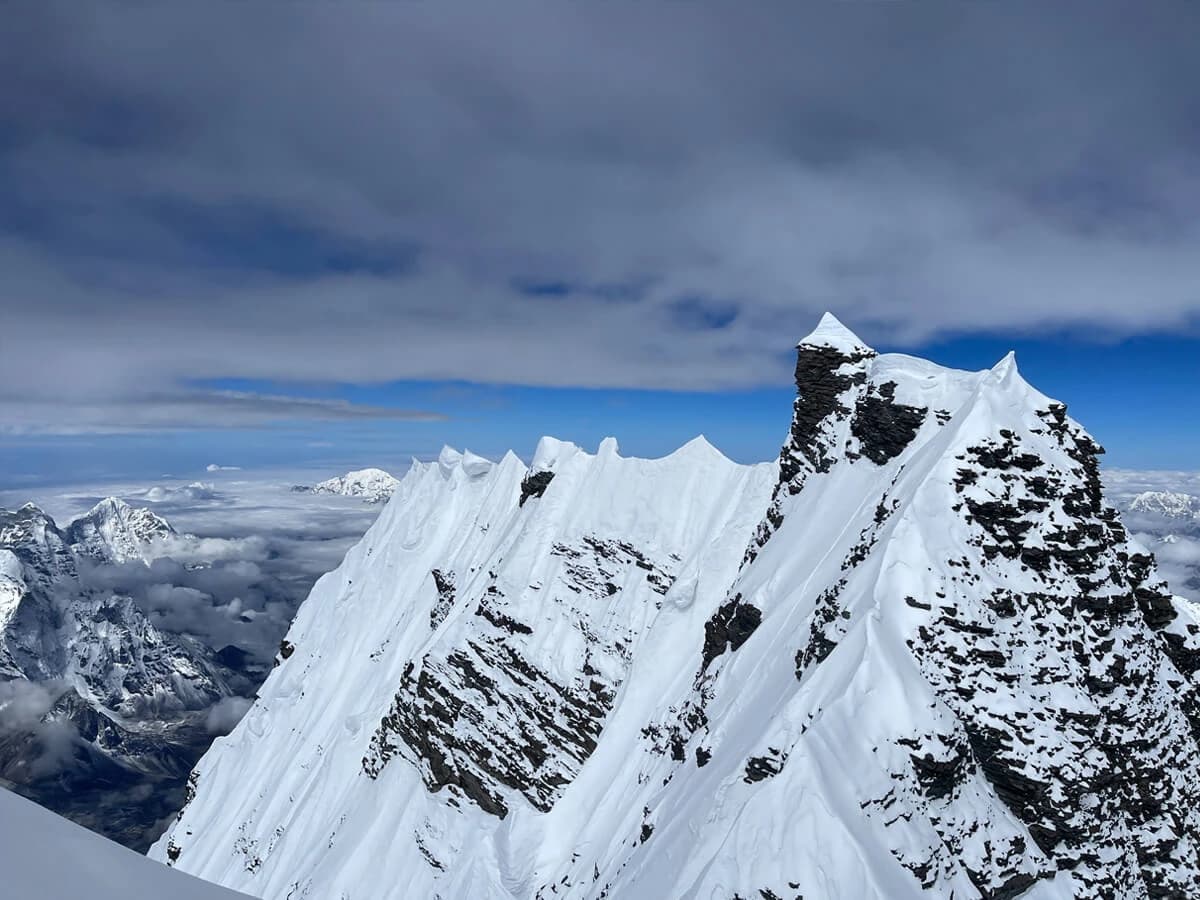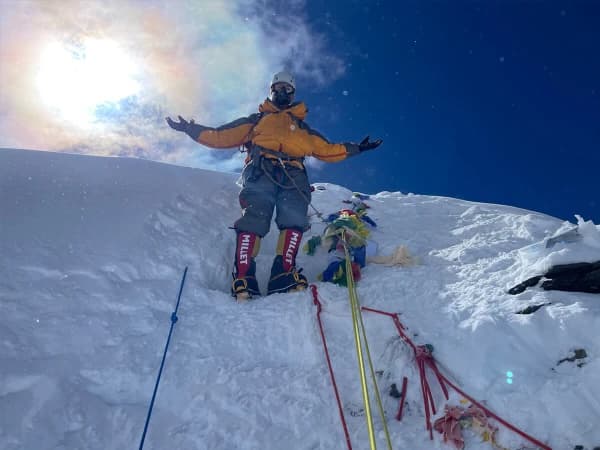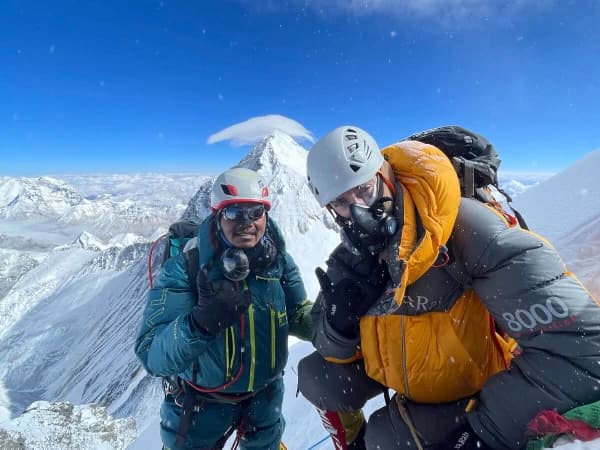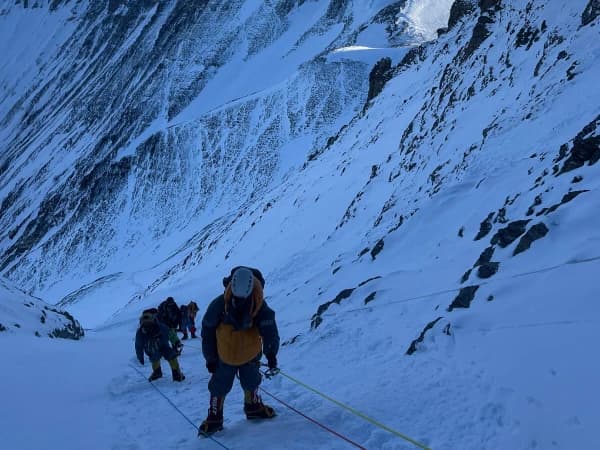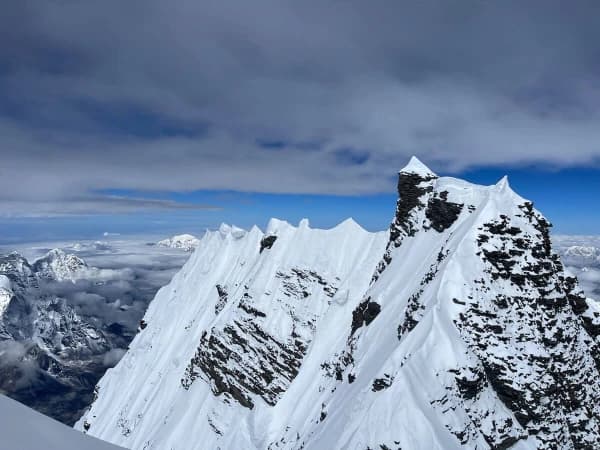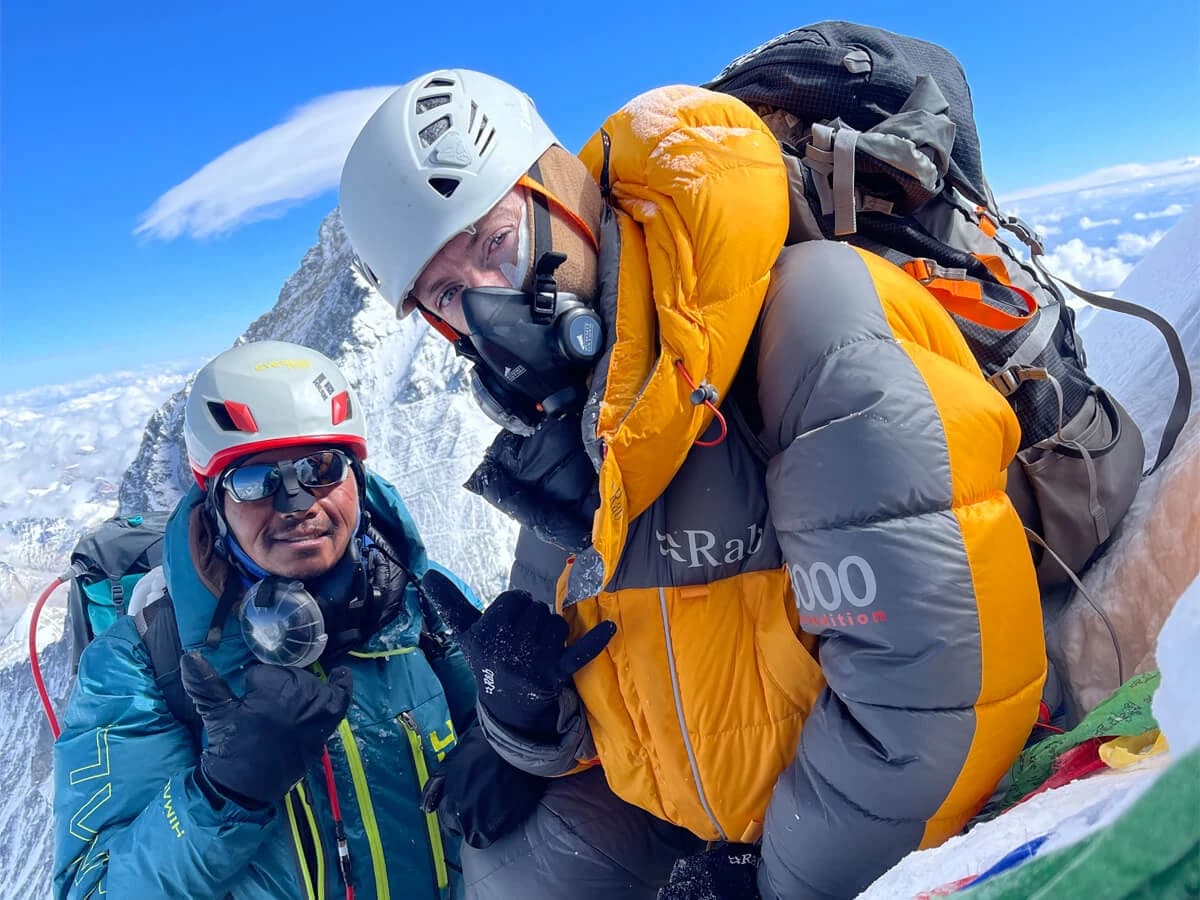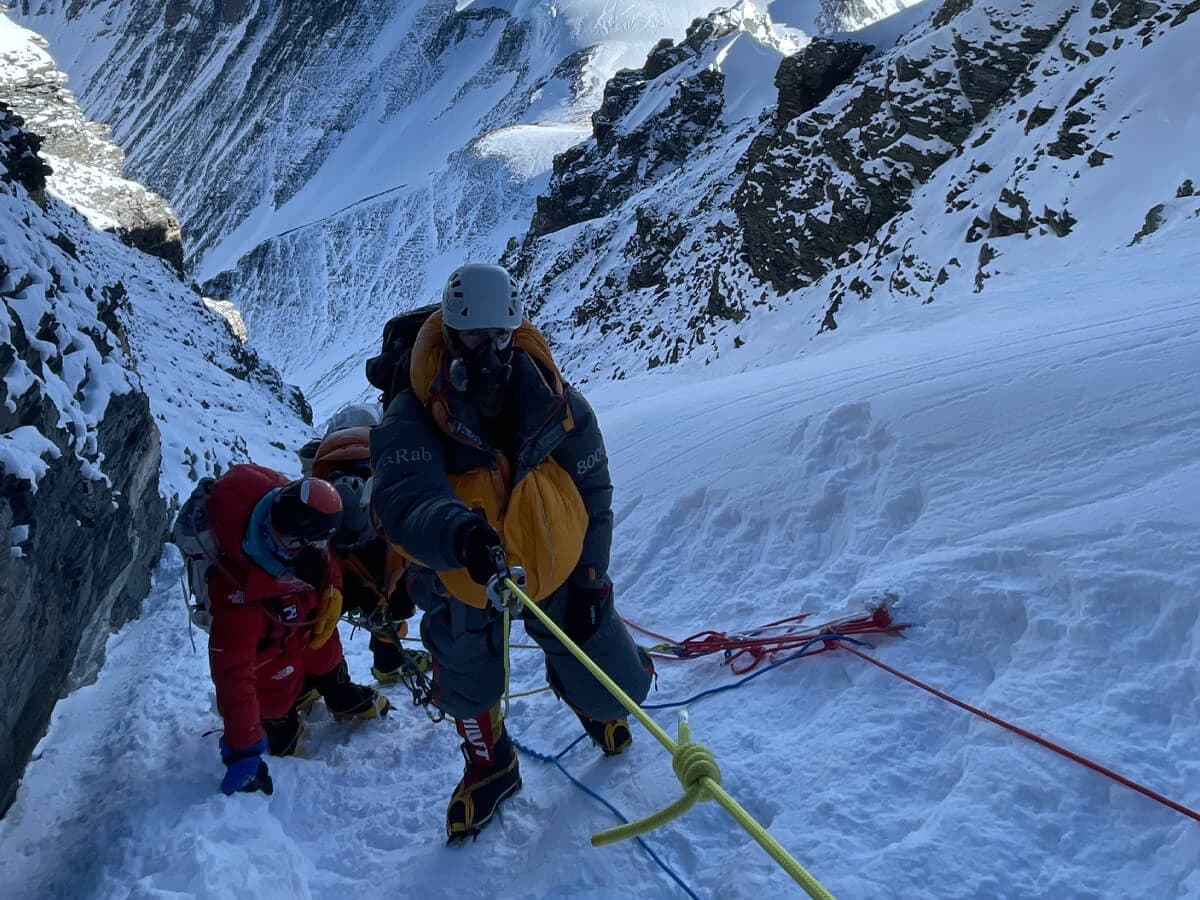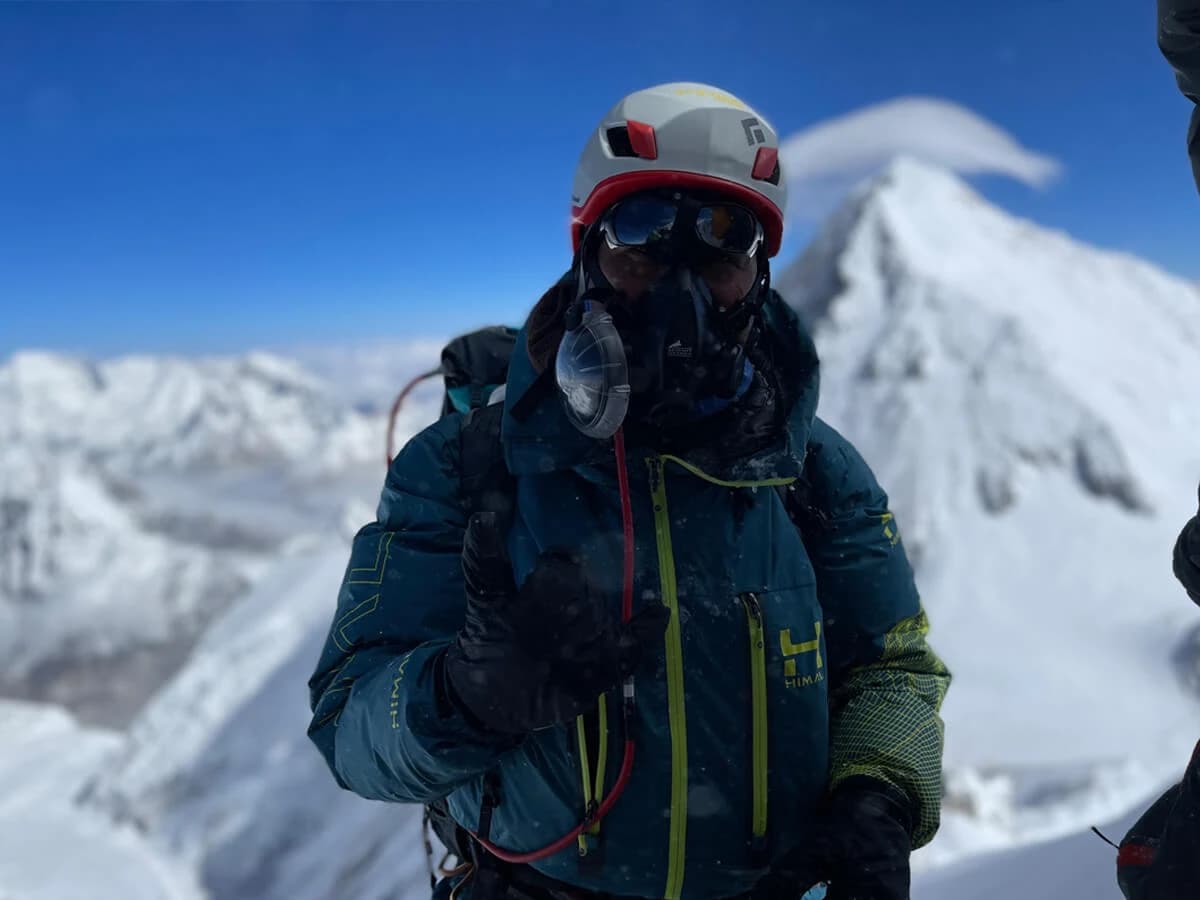Overview
The Mount Lhotse is 4th highest peak on earth after Mount Everest, K2, and Kangchenjunga. Its estimated elevation is 8,516 meters above sea level, the main summit is on the border between Tibet Autonomous Region of China and the Khumbu region of Nepal. Although it is lies in the eastern side of Nepal in Solukhumbu District. The mount, Lhotse offers breath-taking glimpses of the world’s Highest Mount Everest 8,848.86 meters above sea level from close, Mount Lhotse itself, Mount Pumori (7,161m) , Mount Nuptse (7,861m), Mount Makalu (8,762m), Mount Chomo Lonzo (7,818m), and several others named and unnamed peaks.
Highlights
- Get an incredible lifetime experience, climbing the world’s 4th highest Mount Lhotse 8,516 meters.
- Fully guided Lhotse Expedition with Sherpa support and max 02.
- 1:1 Sherpa guide to client ratio & UIAGM/IFMGA expedition leader.
- Provides opportunities to learn and know insights on traditional Sherpa lifestyle, culture, art architecture, dresses, and harmony so on.
- To get an incredible offer of Lobuche East Peak 6,119 meters Climbing for the acclimatization.
- Hike up to Pumori Base Camp for acclimatization and summit preparation.
- Technical training is conducted by an experienced UIAGM/IFMGA expedition leader for the Mt. Lhotse expedition on Everest base camp.
- Get an opportunities of sharing routes of Mount Everest camp 3 (7,100 meters) route with Mount Lhotse.
- Glorious views of magnificent peaks like Mt. Everest, Mt Cho-Oyu, Mt Ama Dablam, Mt Nuptse, Mt Pumori, Island Peak, Thamaserku, and several others peaks.
- Experience the thrilling adventure in the snow covered region to climb the formidable Lhotse South wall and view the bewitching sceneries.
Mt. Lhotse First Ascent History
The Mount Lhotse 8,516 meters was first climbed on 18 may 1956, when the summit was reached by Fritz Luchsinger and Ernst Reiss and they were both from Switzerland. Lhotse is one of the 8,000ers, the 14 mountains on Earth that rise to more than 8,000 meters (26,247ft) above sea level.
What can Experience from the Mount Lhotse Expedition and it routes?
Mt. Lhotse, standing tall at 8,516 meters (27,940 feet), is the fourth-highest mountain on earth in the world and a formidable peak in the Mahalangur Himal sub-range of the Himalayas. It shares much of its climbing route with Mt. Everest via the South Col Route, diverging just beyond Camp 3 from where climbers head toward the iconic Lhotse Face, a steep and icy wall that leads to its summit. Lhotse is considered an integral part of the Everest expedition landscape—not only because it towers near the world's highest mountain but also because it forms part of the dramatic backdrop seen from key points like the Khumbu Glacier and Camp 2.
From the Everest Base Camp (5,364m), climbers ascending Mt. Everest get panoramic views of Lhotse's dark, intimidating face. As you ascend further—especially from Camp 3 (7,300m) located at the top of the Lhotse Face—Lhotse looms powerfully to the southeast. The upper portion of the Lhotse Face is one of the most technically challenging parts of the Everest climb, with steep ice and rock requiring precision and stamina, and for Lhotse-bound climbers, this leads directly toward their summit push.
On summit day for Lhotse, climbers reach the top of the world 4th highest peak from South Col via route Everest to reach the summit of Lhotse. Moreover up to Camp 3 (7,300 meters) of the world highest peak Everest it is also same route to Lhotse, from camp 3 point the route separates of Lhotse, and starts Lhotse camp 4 (7,800 meters) to the summit of the Mount Lhotse peak. From here, not only is the summit of Lhotse visible, but so are the majestic peaks of Everest, Makalu, and Cho Oyu. For many, this view is a climactic reward of the expedition.
The view from Lobuche East Peak (6,119m)—climbed during the acclimatization stage—offers another breath-taking perspective of Mt. Lhotse along with Everest, Pumori, Nuptse, Ama Dablam, and Cholatse. Lhotse dominates the south-eastern skyline and is a constant presence during acclimatization hikes and summit preparations.
In essence, Lhotse is not merely a neighbour to Everest but a vital part of the region’s dramatic mountaineering landscape. Its steep faces, shared routes, and imposing stature make it an unforgettable part of any Everest expedition journey along with Lhotse itself.
Are You Ready for the Lhotse Expedition? How to Prepare for the Journey?
The climb Mt. Lhotse is earth’s 4th highest mountain above sea level, located in the Mahalangur Himal Sub-range of Himalayas. There are two main climbing routes, one approaching the summit from the southeast in Nepal, known as the “standard rout” and the other from the north in Tibet. While posing substantial technical climbing challenges on standard route, Everest presents danger due to altitude sickness, weather, and wind as well as hazards from avalanches and the Khumbu Icefall. As of May 2024, 340 people have died on Everest. Over 200 bodies remain on the mountain and have not been removed due to the dangerous conditions.
So, to ensure you are well-prepared for the Everest expedition journey and keep your body healthy and fit to adjust in the high altitude environment. If you are a regular climber, trekker, and hiker it can also encourage you to achieve you dream without causing any harm related to high altitude sickness. Manage your gear and equipment for your Everest expedition purchase good quality warm climbing gear and equipment for yourself that can be used for a long time so, invest money only for quality products to protect your body from the cold and harsh weather conditions in the high elevation atmosphere.
Physical Fitness
Climbing Mount Lhotse demands exceptional physical fitness because even it is non-technical mountain but in some part you may find technical such while crossing Khumbu Glacier, steep up climbing of Lhotse face is technical and it is dangerous mountain due to the high altitude sickness such as AMS (Acute Mountain Sickness) Symptoms, HACE (High Altitude Cerebral Edema) Symptoms, HAPE (High Altitude Pulmonary Edema), and frostbite these are the most highest sickness chance of Everest expedition as well as you should have to physically mentally well prepared before climbing.
It's important to note that climbing Lhotse requires more than just physical fitness. Prior high-altitude experience, technical climbing skills, and a strong mental game are equally important. To avoid such a problem person has to do different kinds of exercises training which can help somehow and reduce your certain issues related high altitude environment they are as follows:
Altitude Tolerance: Person should have capacity to survive at higher elevation like normal people of the areas so if you do this training it will help you to not bring issues. For this exercise you need to do trekking and peaks climbing in the trekking season to keep you are body adjust with high altitude environment. The ability to function in low-oxygen environments is crucial.
Cardiovascular Endurance: Cardiovascular endurance, or aerobic fitness, is how well your heart and lungs can supply the oxygen you need while you exercise at medium to high intensity. If you have good cardiovascular endurance, you can exercise at medium intensity for a long time (and high intensity for a while) before it makes you tired. This is because your body is able to keep getting the oxygen it needs during exercise.
On the other hand strong cardiovascular endurance allows your body to move your blood efficiently so you can get more oxygen to your cells. This oxygen serves as an energy source to fuel the cells in your tissues and muscles. So engage in activities like running every day, swimming, hiking, dancing, jumping, climbing, and cycling to build stamina for your Lhotse expedition.
Strength Training: Particularly in the legs and core for climbing steep slopes and managing equipment. In Mountaineering speed is strength. From core stability to leg power, every aspect counts. Strength training can help you to develop strong bones, manage your weight, enhance your quality of life, manage chronic condition (reduce back pain, arthritis, obesity, heart disease, and diabetes), and sharpen your thinking skills.
Do strength training exercises for all major muscle groups at least two times a week. Aim to do a single set of each exercise, using a weight or resistance level heavy enough to tire your muscles after about 12 to 15 repetitions. Here are the some strength training exercises they are squats, lunges, calf raises, step up, wall sit, bicycle crunches, walking lunges, hammer curl, overhead press so on for your Lhotse expedition preparation.
Mental Toughness: It is the personal capacity both perseverance and a passion for achieving long-term goals, characterized by the ability to overcome challenges and stay motivated in the face of failure, hardship, and plateaus for your expedition this is one of the main think that you need to know so you can success your plan. Resilience to handle physical and psychological stress. Cultivate a positive attitude and a strong mental outlook. The trek can be physically demanding, so having a positive mindset will help you overcome challenges.
Muscular Endurance: The ability of your legs to perform thousands of repetitive movement is vital Muscular endurance is the ability to continue contracting a muscle, to group of muscles, against resistance, such as weight or body weight, over a period of time. Increasing the performance of these muscles means they can continue to contract and work against these forces. Greater muscular endurance allows a person to complete more repetitions of an exercise, for example, pushups or squats.
From/Technical: Efficient movement over rugged terrain conserves energy and reduces fatigue. This skill is honed only on similar terrain.
Acclimatization: You will spend many hours at high/extreme altitude. Everest base camp stand at 5, 364 meters, which is one of the highest base camp in the greater ranges. It is relatively comfortable, but this altitude won’t allow your body to recover well between rotations. How your body deals with hypoxia will be crucial and it will determine your safety and success.
Hypoxic Conditioning: Hypoxic conditioning typically involves using a hypoxic chamber or mask to reduce the oxygen concentration in the air you breathe. This triggers physiological adaptations, such as increased red blood cell production and improved oxygen utilization. The science and practice has consolidated in favor of the use of norm baric hypoxia via a mask and sleeping tent. While the adaptations are not entirely identical to real hypobaric hypoxia, they do allow for short expedition durations, faster and safer logistics, and a stronger ability to resist illnesses and infections that often hinder your performance on Lhotse. You need to factor about 8-12 weeks of HC for Lhotse. And in the final 6-8 weeks you will be sleeping at such high altitude that your physical training will be compromised. Which means you must start your physical training as soon as possible.
Flexibility: Incorporate stretching exercises into your routine to improve your range of motion and prevent injuries.
The Climbing Gear and Equipment lists of Lhotse Expedition
Climbing Mount Lhotse is not a small feat, it demands meticulous preparation and top-tier gear. Here’s an inclusive breakdown of the essential gear and equipment you needs for successful expedition of Mount Lhotse:-
EQUIPMENT
Travel Documents
- Valid Passport
- Credit Cards
- Pp Size Photo (4Pieces)
- Insurance Paper and Contact Address
- Family Members/Company’s Contact Address
Foot Wear
- Kailas/Lasportiva/Millet (Summit Shoe)
- Normal Socks ( 5-6 Pairs)
- Summit Socks ( 2 Pairs)
- Trekking Shoes (1 Pair)
- Camp Booties (1Pair)
- Basecamp Slipper (1Pair)
Upper Body
- Light Weight Top/Thermo Coat(2-3Layers)
- Mid Weight Top ( 2-3 Layers)
- Heavy Weight Top (2 Layers)
- Fleece Jacket (1)
- Gore Text Jacket (1)
- Down Jacket ( 1)
- Wind Proof Jacket
- Cotton T-shirt for Base Camp (2-3)
Lower Body
- Light Weight Long Under Pants (2-3 Pairs)
- Under Wear (5-7 Pairs)
- Mid Weight Long Under Pants (2-3 Pairs)
- Under Wear (5-7 Pairs)
- Mid Weight Long Under Pants (2-3 Pairs)
- Heavy Weight Long Under Wear
- Gore Text Pant (1)
- Down Pants (1)
- Water Proof Pant (1)
Head
- Sun Cap
- Desert Camp
- Balaclava
- Fleece Hat
- Neck Gaiter (2-3)
Hands
- Thing Fleece Gloves (2 Pairs)
- Wind Stopper Fleece Gloves
- Heavy Gloves (Mitten)
- Summit Gloves
Sleeping Bags
- Sleeping Bag-20 Degree Celsius (For Base Camp)
- Down Sleeping Bag-20 to -40 Degree Celsius (Extreme Comfort)
- Thermarest Mattress (Cell Foam)
- Thermarest Mattress (Inflatable)
Climbing Equipment
- Climbing Helmet
- Down Suit (Kailas/Marmot/Mountain
- Hardware/North Face/Millet
- Crampons (Fit with Boot)
- Ice Axe
- Harness
- Atc Guide
- Jummer/Ascender
- Lock Carabiner (3)
- Unlock Carabiner (3)
- Tape Slings (2)
- Prusik Loops (1)
- Snow Goggle
- Head Light (4 Pairs Rechargeable Batteries Recommended)
- Satellite Phone
- Hand Warmer (If Possible)
Bag Packs
- Rucksacks 45L-55L
- Duffle Bag 90 L-120L (2 Pieces)
- Water Proof Stuff Sacks Large (2 Pieces)
- Water Proof Stuff Sacks Small (2 Pieces)
Sun Stuffs
- Banana Boat/Nivea Sun Cream-50(Spf)
- Lip Guard-20/-50 (Spf)
- Sun Glasses (UV Protection)
- Glaciers Glasses (UV Protection)
Toiletries
- Hand Disinfectant
- Wet Tissue
- Toothpaste
- Toothbrush
- Soap Shampoo
- Garbage Bag
Eating and Drinking
- Water Bottle (2)
- Thermos
Medical
- Brufen/Ibuprofens
- Antibiotic
- Diamox
- Paracetamol
- Handy Plaster
- Crack Bandage
- Tincture Iodine
Miscellaneous
- Walking Stick
- Pocket Knife (Swiss)
- Umbrella/Rain Coat
Get the Best Lhotse Expedition Service with Sherpa Summits
We, Sherpa Summits, specialize in crafting unforgettable mountaineering experiences for both domestic and international adventures in Nepal. Our dedicated team is committed to providing exceptional support and safety throughout your mountaineering climbing journey, we provide 1 Sherpa mountaineering guide for 1 client for the clients safety and security purpose. From acquiring essential permits and arranging transportation to handling every logistical detail, we ensure a seamless experience tailored to your preferences.
Enjoy the epitome of quality service at an affordable price with our Lhotse expedition package. However we only conducts Lhotse expedition with limited people because it is easy to cooperate with each other, providing quality services about logistics, training and every things during their expedition time. Whether you’re embarking on a solo adventure or exploring and climbing the mountains with friends, or a partner, your safety and satisfaction are our top priorities. Our expert UIAGM/IFMGA guides, assistant guides, and trustworthy Sherpa staffs are so supportive, caring so you can achieve your Lhotse expedition successfully. Customize your Lhotse expedition to align perfectly with your desires. Select your preferred departure date, group size, and daily itinerary. We welcome all of all as long as you possess the necessary physical and mental fitness. Rest assured, there are no hidden costs involved and you will receive transparent pricing for your Lhotse expedition.
Embark on the adventure of a lifetime with Sherpa Summits. Our Lhotse expedition bookings for 2025 and 2026 are now open. Don’t hesitate to contact us for any inquiries or to start planning your dreamed Lhotse expedition.

